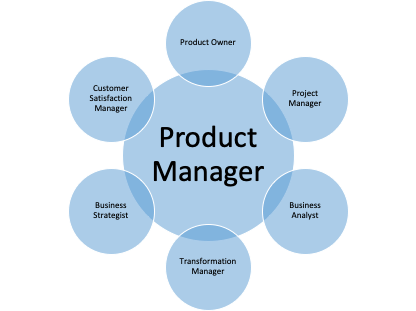
Customers’ current and future needs are revealed and understood by product management, which then develops the products to satisfy those needs. By identifying consumer pain points, assessing their impact, and guiding the team toward a solution, product managers assist a team of designers and engineers in making decisions. In order to create or upgrade a product, product management gives a vision and direction for product development.
How can I turn into a product manager?
Since there is no academic specialisation in “product manager” and product management internships are still uncommon, the majority of product managers come from diverse fields. All technical, data analytics, sales, marketing, and design abilities are valuable in this relatively new “specialisation.”
Ideally, you should have knowledge in at least one of these areas before beginning your career as a product manager. You should have some prior experience managing projects from beginning to end or working on (designing, ideating) products. In particular, prioritisation, assertiveness, and the ability to estimate and demonstrate business value are crucial project management qualities for this position. You must put the needs of the consumer first, pay attention to user input, and translate it into actionable next steps.
Creating a feature delivery plan while working with the product team (developers, designers, UX researchers, and QA) to further deconstruct the feature into incremental advances that can be delivered in sprints.
Maintaining communication with the product team throughout the sprints to explain requirements, check on the product, provide input, test the product’s iterations with users (if possible), and conduct A/B testing prior to delivering the entire product.
gauging the performance of the recently introduced features.
collecting user comments.
examining data from your app or website to get ideas for additional functionality.
generating a fresh concept for a feature.
Detailing the feature description, working out the business value.
determining whether the feature can be created and how much time and effort would be required to deliver, with the aid of engineers.
product backlog prioritisation
Providing the data to the appropriate decision-makers will help secure the funding needed to create the features.
creating research questions that the user research should address in order to gather sufficient data for the development (in collaboration with UX researchers).
How can I educate myself on IT?
Due to the abrupt nature of the move, I did not have much time to prepare for this role. I make an effort to read a little about the newest technological advancements, especially those that are relevant to my product’s domain of content management systems (CMS). The Mind the Product email caught my attention since it’s an excellent resource for new product managers. My development team, however, is the principal source of knowledge. I often ask questions when I don’t understand anything or when I want to know more about something I’ve heard. They are already well-versed in the technology we currently employ as well as many potential substitutes and integrations, and they can suggest a variety of strategies for each new advancement.
What were the difficulties in transitioning from a role as a marketer to one as a product manager?
learning the development jargon that relates to the organisational structure of your company. In the first few weeks, it takes a lot of work to understand it.
Learn about your development team. You don’t need to know how to code, but you do need to be aware of the procedures your team uses to deliver features. You should also have a basic understanding of your product’s architecture and the stack your team uses.
acquiring new project management skills.
learning to speak more frequently and clearly. Never before have there been so many distinct stakeholders and competing priorities involved in one project. Prioritizing the features is difficult enough; getting everyone’s consent to do so is even more difficult.
achieving a balance between high code quality and a quick time to market You need to persuade your engineers that taking short cuts in order to publish the product sooner is worthwhile before working on them afterwards. Sometimes the effort is not worthwhile, and you must inform the management of the reasons behind the lengthy development process and the significance of quality.
What would I suggest for someone looking to go from marketing to product management?
Depending on the industry, organisational structure of the company, workflows, and knowledge levels of the individuals in the existing teams, each Product Management position is unique. You will need more training for some occupations, but you can begin with your current skills for others.
If you’re thinking about becoming a product manager, review the job descriptions at any potential new companies to see exactly what your responsibilities would be. Then, try to fill in any gaps you find. As soon as you join, rely on and pick up information from your colleagues. You can, of course, earn some “product management” qualifications to jump-start your career, but they won’t prepare you for the job’s requirements, and if this is a new role for you, there will always be places where you lack experience. Concentrate on what you need at each stage of this journey and pick up new skills as you go. You must be adaptable, humble, open to others, and willing to plunge into the unknown if you want to succeed as a product manager. As entrepreneurs do, you will need to explore and innovate. Be ready to experience unpreparedness.
